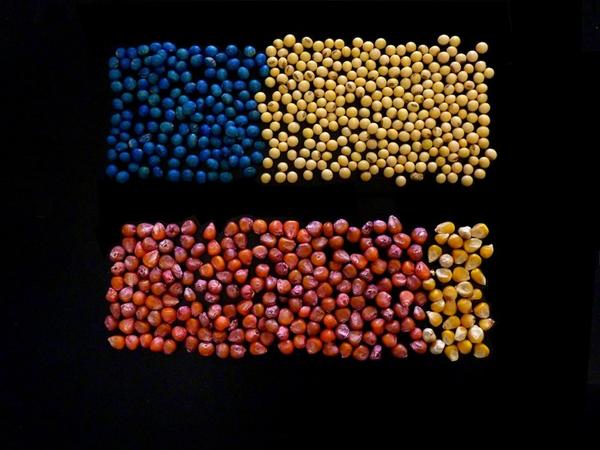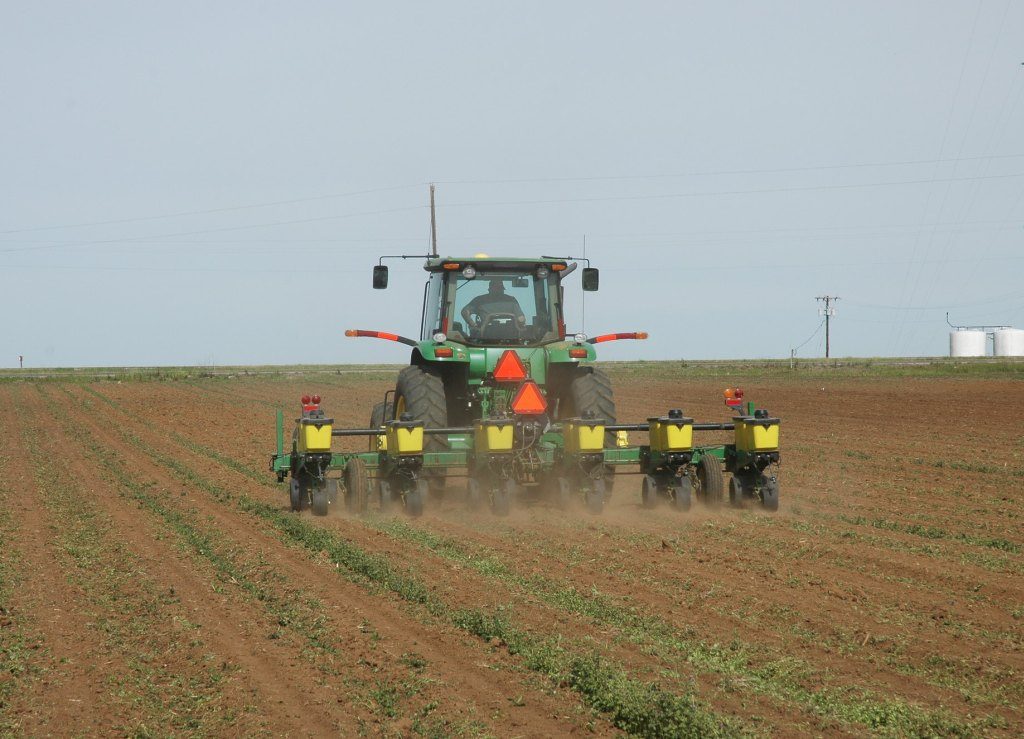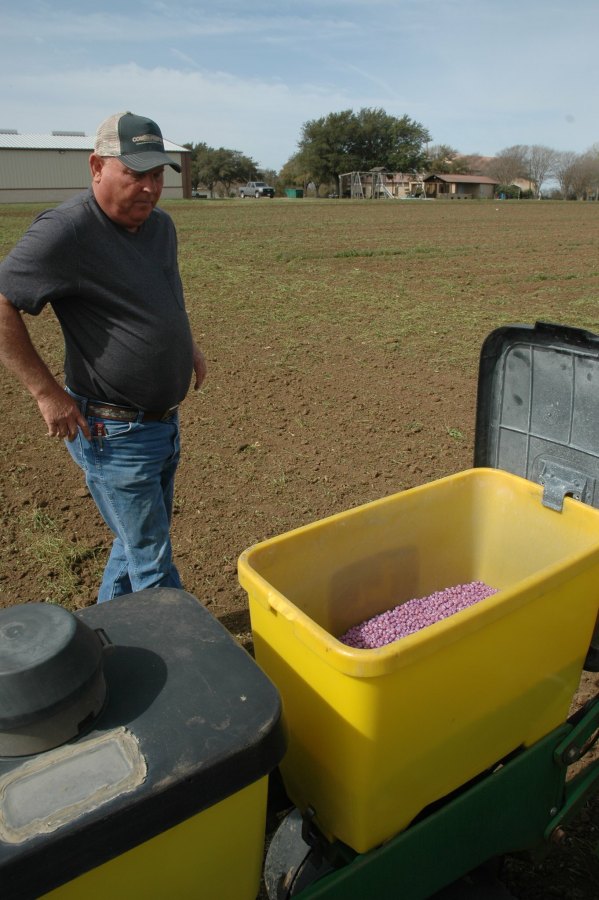
24 April 2019: Spring planting season
Nature uses unusual colors to warn of danger. We do too. The blue and red crop seeds above are warning us that they’re coated with a poisonous nerve agent. Though not as dangerous to humans as to insects, the label says handlers should wear long pants, long sleeves, and chemical-resistant waterproof gloves. “Caution: Harmful if swallowed or absorbed through the skin.”
The colored seeds are coated with neonicotinoids, nervous system disrupters that will permeate every part of the plant making it deadly to a wide range of insects. Only 5% of the neonics are taken up by the plant. The rest remain in the soil, run off in the water or disperse in the air. The chemicals persist 5 months to several years.
The picture above tells us more. The rows are actually bar graphs from a Penn State study. The blue soy at top and reddish corn at bottom show the percentage of neonic-treated soy and corn grown in the United States in 2015. 30% of soy was neonic-treated, 92-95% of corn. The percentage is increasing. You’d be hard pressed to find U.S-grown corn that isn’t imbued with neonicotinoids. That’s where bees come in.
April and early May is corn planting time in the lower Great Lakes region. Tractors like this are in the fields of Ohio and Indiana. I see them as I drive to Magee Marsh.

The seed hoppers contain neonic-treated corn, pinkish red below. (Oh my! The farmer isn’t wearing long sleeves and gloves.)
Meanwhile insects are waking up to forage, fruit trees bloom and honeybees are enlisted to pollinate crops. By 2012 beekeepers noticed large bee die-offs during corn planting season.
To find out why Purdue University conducted a multi-year study, published in 2017, that measured neonic dust deposition up to 1000 m (0.6 miles) from corn planting operations in Indiana. They also compared crop yields of neonic versus untreated corn.
The Purdue study concluded that 42% of Indiana is exposed to neonicotinoids during crop planting, but 94% of honeybees are affected because of their location. “Nearly every foraging honey bee in the state of Indiana will encounter neonicotinoids during corn planting season.” Purdue’s video shows why.
Ironically, the Purdue study found that the benefit of neonicotinoids is declining or negligible. “The common seed treatments produced no improvement in crop yield.” Despite these findings neonics are still in use.
Today we know that neonicotinoids persist in soil and water, and travel in the air during planting season. I wish the chemicals retained their warning colors. We need to see them.
(photo credits:
* bar graph of soy and corn seeds by Ian Grettenberger / Penn State courtesy Penn State News from “Rapid Increase in Neonicotinoid Use is Driven by Seed Treatments”.
* tractor and corn planting Caldwell, Texas, 2013 (Texas A&M AgriLife Extension Service photos by Blair Fannin),
* video from Purdue University: Corn seed treatment insecticides pose risks to honey bees, yield benefits elusive.
Click on the captions to see the originals)
p.s. Since 2014 some best management practices and regulatory agencies advise farmers to control dust to protect bees.

Wow, that is a very worrisome story from Indiana. Humans are eating, drinking and inhaling those neonicotinoids too. Coating those seeds seems a terribly dangerous practise. It is too bad that the seed industry is controlled by the chemical- pharmaceutical industry. On another subject has the construction begun yet at the bridge at Duck Hollow? Thank you for your always informative blog.
Betty, Duck Hollow construction has begun but you can still get there. I went birding there yesterday.
This is infuriating. Thanks for including it in your column.